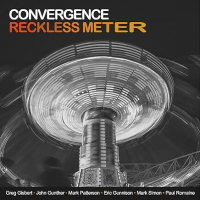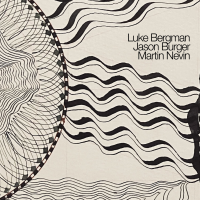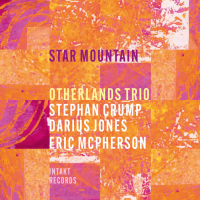Home » Jazz Articles » Getting Into Jazz » Eddie Condon: Jam Session Coast To Coast/Jammin' at Condon's
Eddie Condon: Jam Session Coast To Coast/Jammin' at Condon's
Getting Started
If you're new to jazz, go to our Getting Into Jazz primer for some hints on how to listen.CD Capsule
1950's straight-ahead jazz, spiced with ad lib commentary by impressario/guitarist Condon. The musicians are laid back and having fun. Kick off your shoes and join them.Background
In the 1940's and '50s, Eddie Condon was a legendary presence in the world of jazz. A tireless promoter, proselytizer and spokesman, he presided over his own Manhattan jazz club, hosted a network TV show (on jazz, can you believe it?), did radio with Edward R. Murrow on the BBC and organized jazz concerts at New York's Carnegie Hall and Town Hall. In his spare time he authored several jazz books and wrote a newspaper column. And those are the high points.Condon himself was a contradiction. As a musician, he couldn't have been more conservative. In the 1920's he helped invent Chicago-style jazz, and for the rest of his life he played (and tolerated) just about nothing else. (For more on Chicago-style, see Wild Bill Davison: The Commodore Master Takes in this Getting Into Jazz series.) But in another and more important sense, Eddie Condon was a revolutionary, a pioneer in breaking down racial barriers in the world of jazz. It's hard to imagine now, but jazz was as segregated as the rest of society in the 1950's, with black bands and white ones, and never the twain did meet—neither on stage nor in the recording studio. But Condon was not to be denied. He organized the first integrated recording sessions, and saw to it that his concerts (and the tiny stage in his jazz club) featured black and white musicians. He even had the honor of being denied access to Washington's Constitution Hall by the Daughters of the American Revolution. Something about his proposed concert attracting "undesirable elements."
About these CD's
The producers of the two CD's in this set, Jammin' at Condon's and Jam Session Coast to Coast (which features Condon's group only on tracks 1-4), took a refreshing approach to making jazz albums: they encouraged Condon to banter with the musicians and comment at will while the recordings were being made. So as you play these tracks, you'll hear Condon's voice in the background, joking, poking fun, encouraging the players, expressing his pleasure. The result? You feel like you're in the studio with them. It doesn't get more relaxed than this.Although the original New Orleans/Chicago style "front line" consisted of a trumpet/cornet, a clarinet and a trombone, Condon, like a latter-day Noah, used two of each horn for these recordings, encouraging the musicians to play off one another in their solos. The booklet that comes with the CD's provides the musicians' names and the precise sequence of their solos in most of the tracks.
CD highlights
Disc 2, Track 2, "How Come You Do Me Like You Do"This track exemplifies the easygoing-but-charged dynamic of all these recordings. It's an extended series of medium tempo solos in which each musician takes two choruses, with a stop-time pause in the second chorus to kick up the excitement. At 7:24, listen for a sudden eruption of joy from one of the players. Wild, yes, and probably fueled by plenty of liquid refreshment, but the music underneath never loses its discipline. At 8:53 the multi-talented Dick Cary takes his solo playing an alto horn. Condon, ever derisive of anything musically new or different, declares at 9:29 that Cary is playing "a valved bedpan." Notice that there are two closing ensembles, at 10:10 and 11:28, each featuring a different set of horns. You'll have to listen carefully to detect the transition.
Disc 1, Track 4, "Jam Session Blues/Ole Miss)"
The track opens with Condon giving last-minute instructions to the group. Just as the recording is about to start, he says quietly "We might have a chance." It's a standard movie line (the platoon is outnumbered, the cowboys are surrounded by bad guys), but in this setting it's a tasty slice of surreal humor.
The music, a medium-tempo blues, starts at 0:45, with Condon calling out the names of the soloists. (He calls "Dick Cary" at least twice, since Cary played both piano and trumpet on these sides.) His comment at 4:08 about the lyricist Johnny Mercer apparently refers to an invitation asking Mercer, a Condon friend, to join them in the studio. At 4:27 the tempo suddenly heats up with the start of "Ole Miss," a W.C. Handy tune that memorializes a famous train of the same name. Unfortunately, things disintegrate a bit at 8:25 with a final ensemble in which six horn players try to improvise together, overwhelming our ears and possibly the recording equipment.
Disc 1, Track 2, "Emaline," etc.
Time for a change of pace, with trombonist Cutty Cutshall, clarinetist Edmond Hall and cornetist Wild Bill Davison playing three slow ballads, straight and simple. No improvisation, no decoration. Just lean back, close your eyes and let yourself float. (There may be some waves during Davison's solo.)
Disc 2, Track 4, "Tin Roof Blues"
This track is set up more conventionally than the others, with solos and ensembles in the usual sequence, but you'll find white-hot passion here. Listen for Lou McGarrity's trombone solo at 1:09, especially his second chorus, after Condon's encouraging "Do it." And Billy Butterfield's razor-sharp trumpet at 3:26. And later, at 5:03, the special burn of Edmond Hall's clarinet, like a rasp wrapped in velvet. (For more about "Tin Roof Blues," see the article Sidney Bechet: Runnin' Wild in this Getting Into Jazz series.)
Disc 2, Track 4, "When My Sugar Walks Down the Street," etc.
Great fun to hear, this track is packed with lively chase sequences in which the musicians take turns finishing each other's sentences. The chasing begins in the midst of "When My Sugar," at 0:54, with an interchange between Bud Freeman's tenor sax and Peanuts Hucko's clarinet, and it resumes at 2:25 (after the tune has switched to "I Can't Believe That You're in Love with Me") with the juxtaposition of Butterfield's clean-cut trumpet and Davison's smeary cornet. Then it's Freeman's tenor sax and Cutty Cutshall's trombone, and the laid-back horserace is on. You can imagine Condon sitting in front of a semicircle of horn players, pointing to pair them up. Round and round they go in chase after chase, until a final ensemble at 4:47. If you listen very carefully at the very end, you'll hear Condon give a quiet little chuckle. What a nice finish.
Track Listing
Disc One: 1. Beale Street Blues 2. Emaline/Don't Worry 'Bout Me/I Can't Give You Anything but Love 3. Riverboat Shuffle 4. Jam Session Blues/Ole Miss 5. (What Did I Do to Be So) Black and Blue 6. I Ain't Gonna Give Nobody None O' This Jelly Roll 7. Ja-Da 8. The Sheik of Araby 9. Squeeze Me 10. South Rampart Street Parade. Disc Two: 1. There'll Be Some Changes Made 2. How Come You Do Me Like You Do? 3. Blues My Naughty Sweety Gave Me 4. Tin Roof Blues 5. When My Sugar Walks Down the Street
Personnel
Eddie Condon
guitarDisc One: Eddie Condon (Guitar), Bud Freeman (Tenor Saxophone), Billy Butterfield (Trumpet), Dick Cary (Piano), Edmond Hall (Clarinet), Peanuts Hucko (Clarinet), Lou McGarity (Trombone), Wild Bill Davison (Cornet), Cutty Cutshall (Trombone), Al Hall (Bass), Cliff Leeman (Drums), Gene Schroeder (Piano). Disc Two: Eddie Condon: (guitar), Wild Bill Davison (cornet), Cutty Cutshall (trombone), Edmond Hall (clarinet), Gene Schroeder (piano), Walter Page (bass), Dick Cary (trumpet), Lou McGarrity (trombone), Peanuts Hucko (clarinet), Cliff Leeman (drums), George Wettling (drums), Rampart Street Paraders.
Album information
Title: Jam Session Coast To Coast/Jammin' at Condon's | Year Released: 2003 | Record Label: Collectables
Tags
PREVIOUS / NEXT
Support All About Jazz
 All About Jazz has been a pillar of jazz since 1995, championing it as an art form and, more importantly, supporting the musicians who make it. Our enduring commitment has made "AAJ" one of the most culturally important websites of its kind, read by hundreds of thousands of fans, musicians and industry figures every month.
All About Jazz has been a pillar of jazz since 1995, championing it as an art form and, more importantly, supporting the musicians who make it. Our enduring commitment has made "AAJ" one of the most culturally important websites of its kind, read by hundreds of thousands of fans, musicians and industry figures every month.






















